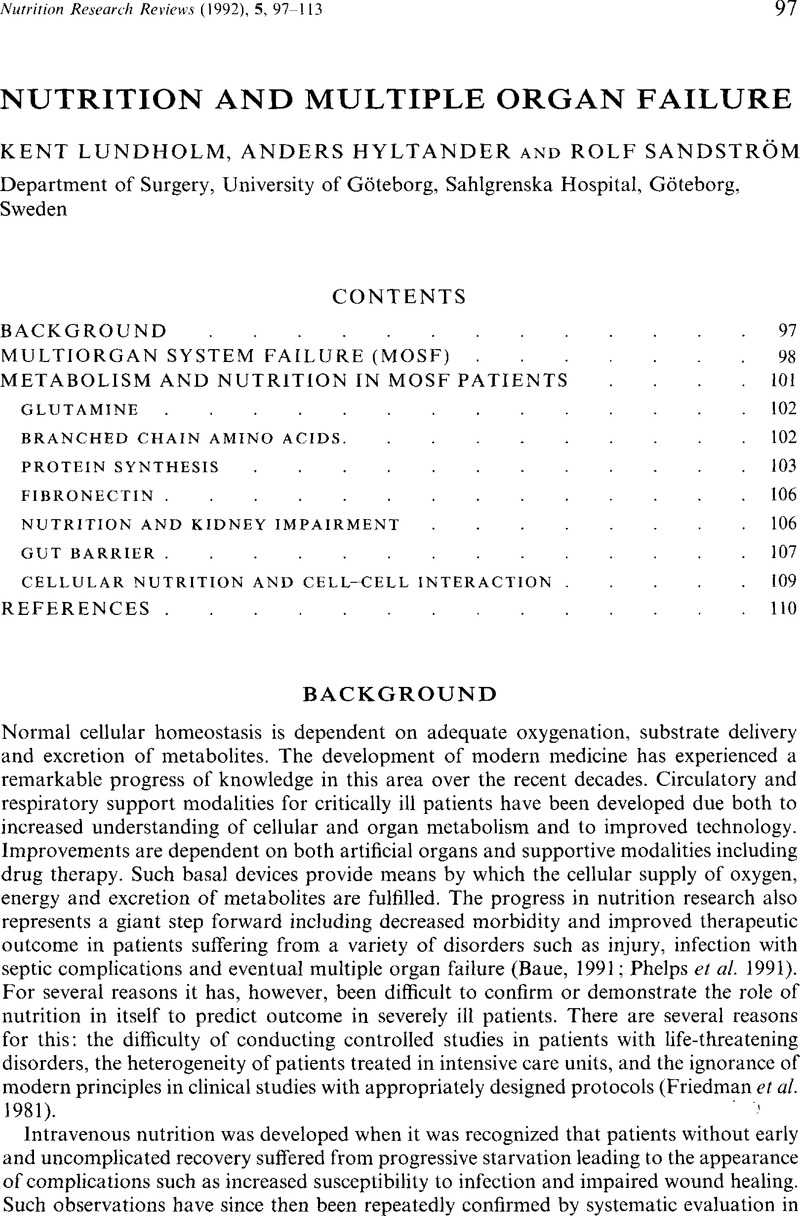Crossref Citations
This article has been cited by the following publications. This list is generated based on data provided by Crossref.
Kelly, Frank J.
1994.
Vitamin E Supplementation in the Critically Ill Patient: Too Narrow a View?.
Nutrition in Clinical Practice,
Vol. 9,
Issue. 4,
p.
141.
Lundholm, Kent
1995.
Avis sur la conférence de consensus de.
Nutrition Clinique et Métabolisme,
Vol. 9,
Issue. 4,
p.
244.
SANDSTRÖM, R.
SVANBERG, E.
HYLTANDER, A.
HAGLIND, E.
OHLSSON, C.
ZACHRISSON, H.
BERGLUND, B.
LINDHOLM, E.
BREVINGE, H.
and
LUNDHOLM, K.
1995.
The effect of recombinant human IGF‐I on protein metabolism in post‐operative patients without nutrition compared to effects in experimental animals.
European Journal of Clinical Investigation,
Vol. 25,
Issue. 10,
p.
784.
Lundholm, K.
1996.
Perioperative artificial nutrition in elective adult surgery.
Clinical Nutrition,
Vol. 15,
Issue. 5,
p.
236.
Griffiths, R. D.
Palmer, T. E. A.
and
Jones, C.
1997.
Yearbook of Intensive Care and Emergency Medicine 1997.
Vol. 1997,
Issue. ,
p.
715.
Whitney, Larissa D.
Caruso, Lawrence J.
White, Peggy
and
Layon, A. Joseph
2013.
Textbook of Neurointensive Care.
p.
391.
Black, C.
Grocott, M.P.W.
and
Singer, M.
2015.
Metabolic monitoring in the intensive care unit: a comparison of the Medgraphics Ultima, Deltatrac II, and Douglas bag collection methods.
British Journal of Anaesthesia,
Vol. 114,
Issue. 2,
p.
261.
Mathew, Snehamol
Ganguly, Priyanka
Kumaravel, Vignesh
Bartlett, John
and
Pillai, Suresh C.
2020.
Nano-Materials as Photocatalysts for Degradation of Environmental Pollutants.
p.
65.
Yamaki, Vitor Nagai
Rabelo, Nícollas Nunes
Welling, Leonardo C.
and
Figueiredo, Eberval Gadelha
2021.
Neurocritical Care for Neurosurgeons.
p.
391.



